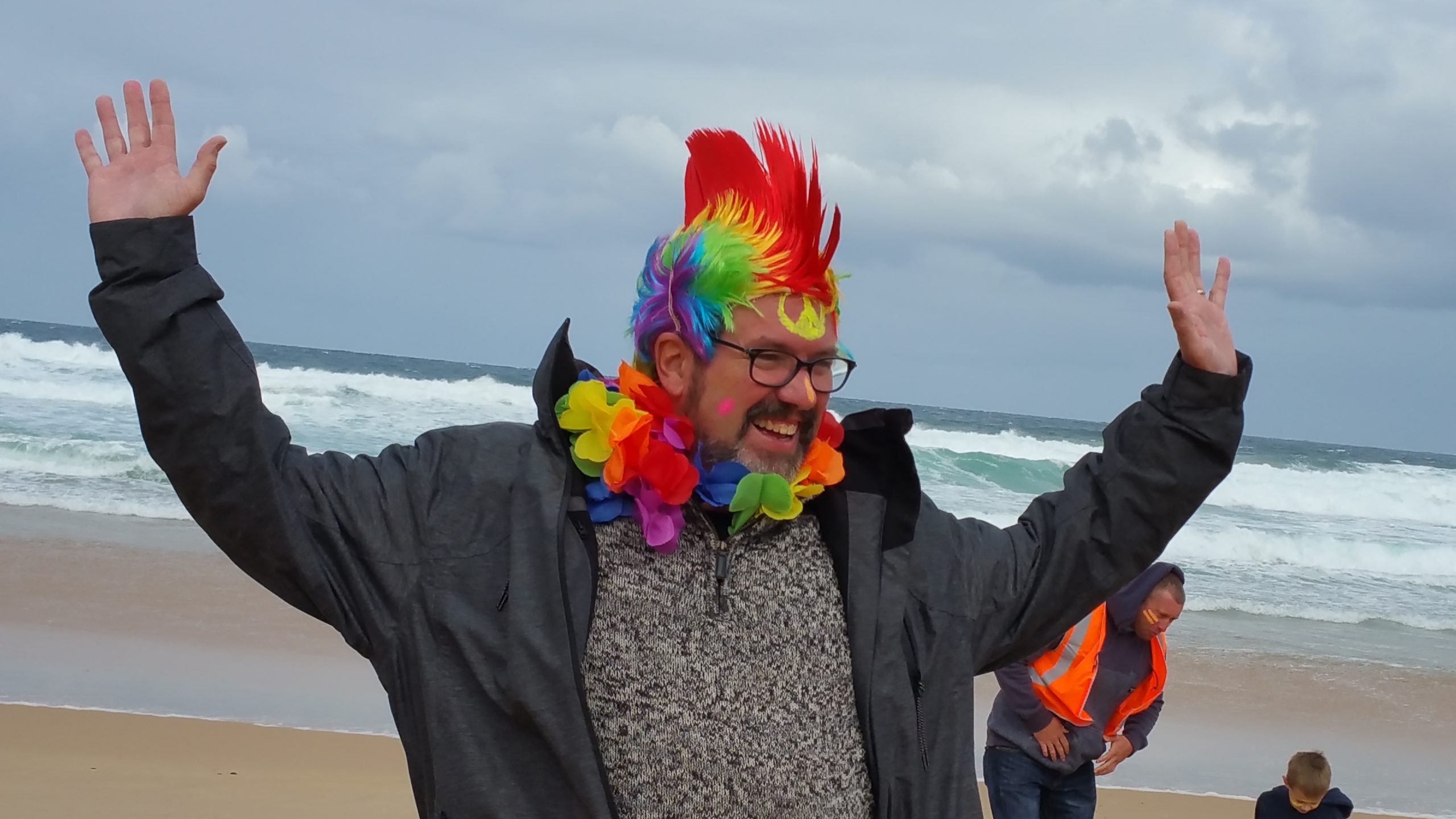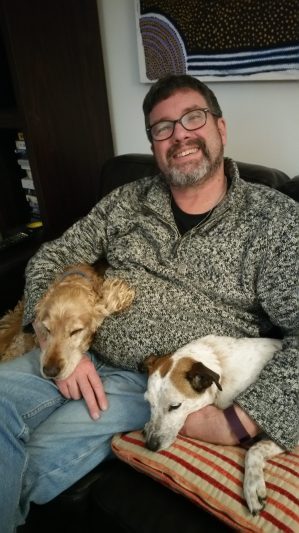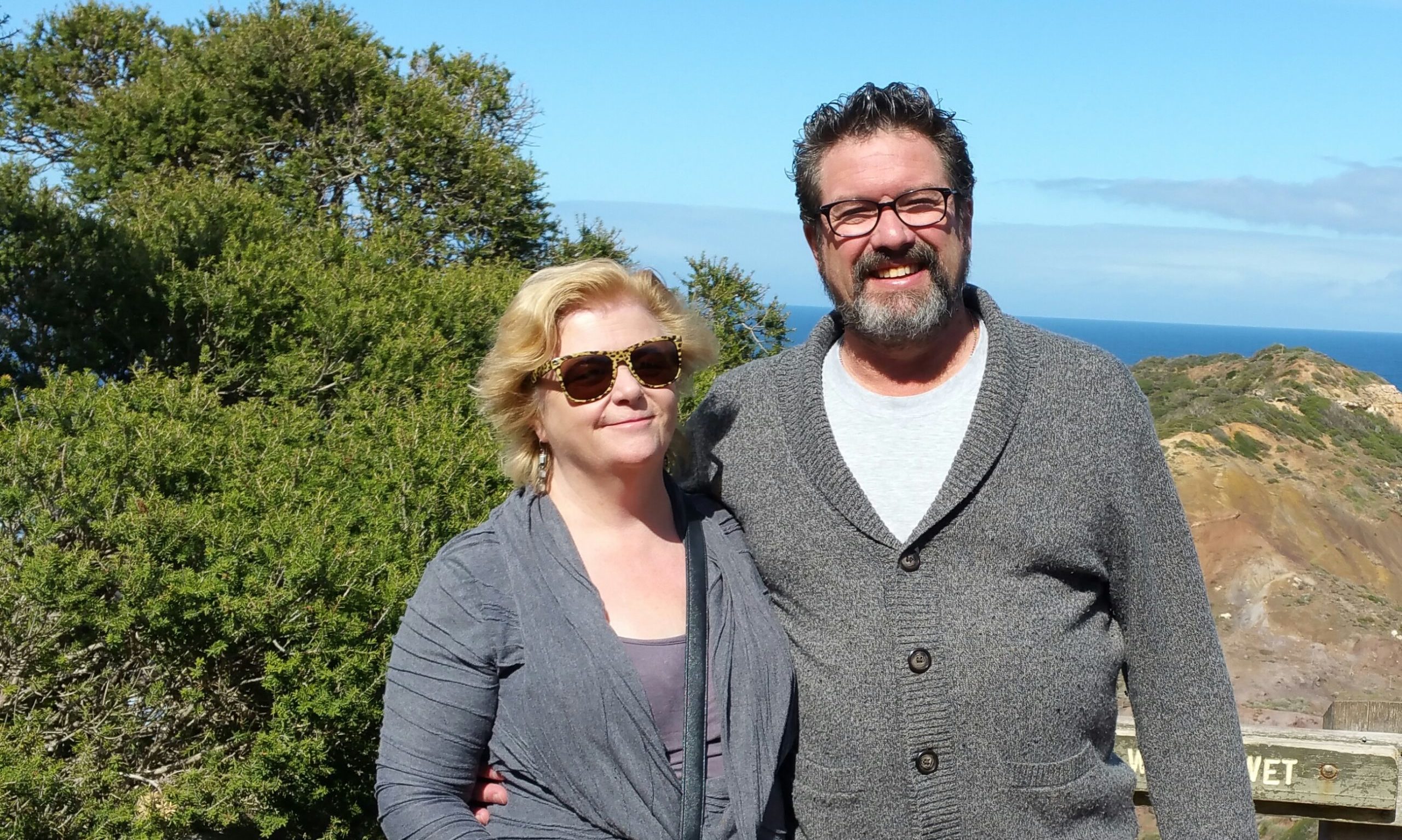Ken isn’t ruled by his MPN and is optimistic about his future

Had Ken Young been home, rather than in Melbourne’s CBD when his spleen spontaneously ruptured, he mightn’t have lived to tell us about his 20+ years living with an MPN.
“I nearly died,” said Ken, 64, describing the life and death incident in December 2005.
“I was travelling on the train when I had this incredible pain on my left side and shoulder. I thought I was having a heart attack.”
This happened on his way to the city to buy clothes for his first grandchild. He got off at Flinders Street Station, hailed a guard, explained he was unwell and to call an ambulance, which took him straight to hospital.
“Had I been home having a snooze, I probably wouldn’t have woken up. It was very confronting,” he said.
Seven years prior, Ken, was diagnosed with polycythaemia vera (PV), aged 43, after going to his GP about a sore foot. It turned out to be an ischaemic toe that was pre-gangrenous, and he was told to go straight to hospital. That’s where he spent Easter 1998, not camping as planned!
“I was very lucky to find, quite early in my journey, someone who said, ‘yeah I think I know what it is’,” said Ken.
But first, he “fell into the hands of surgeons” who looked at how to remove his toe. They tried to find the cause and thinking there may be a blockage, Ken had an angiogram. He was also told, ‘your blood is like jam’.
“It never clicked…why it was like jam?” said Ken.

“When they couldn’t work out what the problem was, I was sent to a hospital physician. She took one look at me and my blood results and said, ‘I think I know exactly what the situation is’.
“I had that classic ruddy complexion of polycythaemia,” said Ken, and his haematocrit “was quite high”.
She referred him to a specialist professor but when the result of a bone marrow biopsy was ‘MPD unspecified’, Ken went back to the physician.
“She said, ‘I’m pretty sure it’s polycythaemia’ and referred me to a specialist haematologist,” said Ken, who was originally diagnosed with an MPD.
“I was told I had a myeloproliferative disorder and said, ‘how do you spell that’? It wasn’t named a neoplasm until a few years later.
“When I was first diagnosed, I was quite shocked,” said Ken, because his haematologist had no information to give him and he was strongly advised against looking on the internet.
“I was working in IT at the time, so I went on what was then Alta Vista (before Google) and it came up with the backend of an insurance company that basically said, ‘do not insure – dead within five years of diagnosis’, so I thought, okay this is serious.”
Not much online support was available either, but there were online email lists in the UK and U.S.
“Because I was in the tech industry, I quickly joined up,” said Ken, who came across a fellow Australian with the disease “who was very knowledgeable”.
“He helped me with the ins and outs of the MPDs and as there was no Australian email list, he encouraged me to set one up,” said Ken, which he did in September 1998.
“That’s how I got to be an advocate in MPDs.”
Ken has since run the Australian MPN email list “in various forms and on various platforms”. It started with 10 subscribers and at the last count had 233 Australians and New Zealanders.
Over the intervening years, Ken has had a strong connection to people with MPN and has been very active with the MPN Alliance Australia which is a Leukaemia Foundation-associated patient group.
“A lot of people just don’t know what’s available to them and many say, ‘I’m not happy with my specialist’.
“I refer people to the Leukaemia Foundation’s support services, and talk about advocacy and what their rights are as patients. A lot of them have absolutely no idea that you can actually ask for a second opinion and simple things like asking a doctor to write things down.”
Ken’s professional background is secondary teaching and he’s worked in youth homelessness and disability. Now he works part-time – four days a week – for a primary care partnership in Victoria in the area of patient advocacy within health services.
“Because I’ve got the lived experience, I’ve got a lot to contribute in that area.”
Ken’s treatment protocols
After being diagnosed, Ken had a venesection every two to three months until the spleen incident in 2005, when his medication was changed to hydroxyurea (Hydrea®), which Ken reacted to “very badly”.
“Within four months, I had massive ulceration from my lips down through my trachea into my upper respiratory area, and incredible ulceration on my legs.
“They quickly took me off Hydrea and put me on interferon. For six to seven years I was on quite a high dose, which I self-injected at night five times a week.
“I felt incredibly exhausted, and I think it was the cause of peripheral neuropathy in my feet.”
Ken was on interferon from 2006 until January 2019 when he went on pegylated interferon alfa-2a (Pegasys®).
“I worked closely with Nathalie Cook [a fellow MPN advocate] to get pegylated interferon on the Pharmaceutical Benefits Scheme,” he said.
“Now I’m on 45mg of Pegasys once a week. My bloods are controlled, I’ve got a lot more energy, I don’t feel tired, and I find it much easier to take than Roferon®-A [interferon alfa-2a].
“I’ve got a routine. Every Saturday night I do my injection; subcutaneously either into my stomach or thighs, where there’s a bit of meat, and it’s very straight forward.”
Over his 20 years with MPN, Ken has had three bone marrow biopsies; in 1998, 2001 and 2018.
“There’s been very little progress of fibrosis. It’s still polycythaemia and it’s still controlled,” he said.

Living with an MPN
“I’ve had MPN for a significant chunk of my life. It’s just part of who I am, and I just get on with it,” said Ken.
“In retrospect, having the diagnosis hasn’t limited my enjoyment in life. It’s extended it in a way that makes me want to be part of a wider community of people, and it’s quite a sharing and positive experience.
“You get to a point in life where different things are important and for me it’s being able to make a difference.
“Part of the problem with getting a blood cancer is the sense of helplessness,” said Ken.
“I can’t change the diagnosis – that’s happened. I can’t change the treatment – that’s just going to happen, but I can change other things for other people… making sure there’s information and support services.
“For me it’s working out what you can change and focusing on that. There’s so much of life you can’t control – it’s about being active where you can.
Ken’s advice
“Educate yourself,” said Ken.
“It’s not about becoming an academic and reading scientific papers. There are ways of getting information that are quite accessible and there are some wonderful YouTube presentations from MPN specialists that you can sit and listen to.
Here’s Ken’s ‘go-to’ list:
www.patientpower.info
www.mpnallianceaustralia.org.au
www.mpnvoice.org.uk
www.mpnadvocacy.com
“And this may be a blokey comment… but a lot of males won’t address health issues and tend to have a ‘she’ll be right’ attitude.
“It’s really important to share when you’re not feeling well, and things change.
“I know a lot of people, myself included in some respects, who tend to be a bit stoic.
“The important thing is to know your changes, notice what’s happening to your body and to yourself, and share this with the people around you.
“There’s probably a reason that you should investigate.”
How the MPN field has progressed
“When I was first diagnosed no one knew what caused MPN,” said Ken.
“The whole thing has changed. Understanding at the genetic level has changed dramatically and the understanding of the JAK2 and other genetic mutations has opened up all sorts of treatment options, particularly with the JAK2 inhibitor drugs.
“There are discoveries that MPNs have links to inflammation. There’s the development of immunotherapies, and the potential for targeted treatment in the CAR T-cell area is something that is completely revolutionary.
“None of that was around 20 years ago. Where we’ve come from, to where we are now, is quite amazing,” he said.
“Now in Australia there are dedicated MPN research groups like the work Steven Lane is doing in Brisbane and Kate Burbury at Walter and Eliza Hall Institute and Peter McCallum Cancer Centre, Andrew Perkins at Monash, David Ross in Adelaide, and Wendy Erber and her team in Perth.
“And there’s more research in the U.S. and UK looking at the whole notion of what’s driving these diseases that offers a whole new way of looking at them and new treatment patterns.
“The main treatment option for people at the moment – if you can do it – is a bone marrow transplant, which has incredible risks.
“There may well be different treatment options. Who knows where it’s all heading. It’s an exciting time,” said Ken.
Where Ken is at with his MPN
“My disease is stable, and I’ll probably live my three score and ten years,” he said.
“I’m quite optimistic about my future actually. I’m not ruled by my disease or defined by it.
“I do other things that are positive contributions to the community,” said Ken, who with his wife, Claire, are foster carers.
Last updated on February 23rd, 2022
Developed by the Leukaemia Foundation in consultation with people living with a blood cancer, Leukaemia Foundation support staff, haematology nursing staff and/or Australian clinical haematologists. This content is provided for information purposes only and we urge you to always seek advice from a registered health care professional for diagnosis, treatment and answers to your medical questions, including the suitability of a particular therapy, service, product or treatment in your circumstances. The Leukaemia Foundation shall not bear any liability for any person relying on the materials contained on this website.